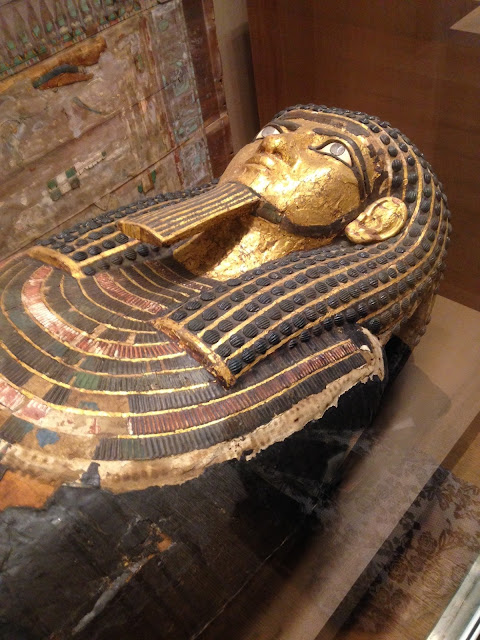Day 399 - Michelin
February 7, 2025
Gallery 622 takes as its theme the origins of French painting. The introductory signage discusses the founding of the academy of painting and sculpture and its goal of creating a distinctly French school, characterized by simplified forms, glowing colors, and dedication to classical and historical themes.
I like George de La Tour’s “Penitent Magdalene” as well as his “The Fortune Teller,” but many of the works on display leave me rather cold. They just don’t seem all that interesting to me. The forms are too simplified, the paint application too precise and superficial - not “painterly” enough. And I’m growing tired of images of figures holding string instruments (three of them in this gallery) as well as of Biblical and mythological characters. I have to acknowledge, though, that I've been taught to look down on academic painters and to prize artists who broke away from the establishment, so that I'm not approaching these works with a completely open mind
In any event, the realistic 1656 oil on canvas by Jean Michelin, entitled "The Baker's Cart," is unexpectedly welcome and refreshing. Measuring roughly 54 inches wide and 40 inches high, it depicts a family of six - a woman, two men, and three young boys - selling their bread in an urban setting. The subjects look out unsmiling. They are clearly lower-class, as evidenced by their homespun clothing, with its patches and dusty and ragged hems. Their ruddy cheeks and tanned hands indicate a life exposed to the elements. The painting's palette consists mostly of earth tones, broken primarily by the woman's white scarf and collar and by touches of red in the attire of a couple of other figures.
Michelin has not in the least sentimentalized these people; in my view, he gives them an inner dignity. I wonder for whom the artist painted this sobering picture.




Comments
Post a Comment